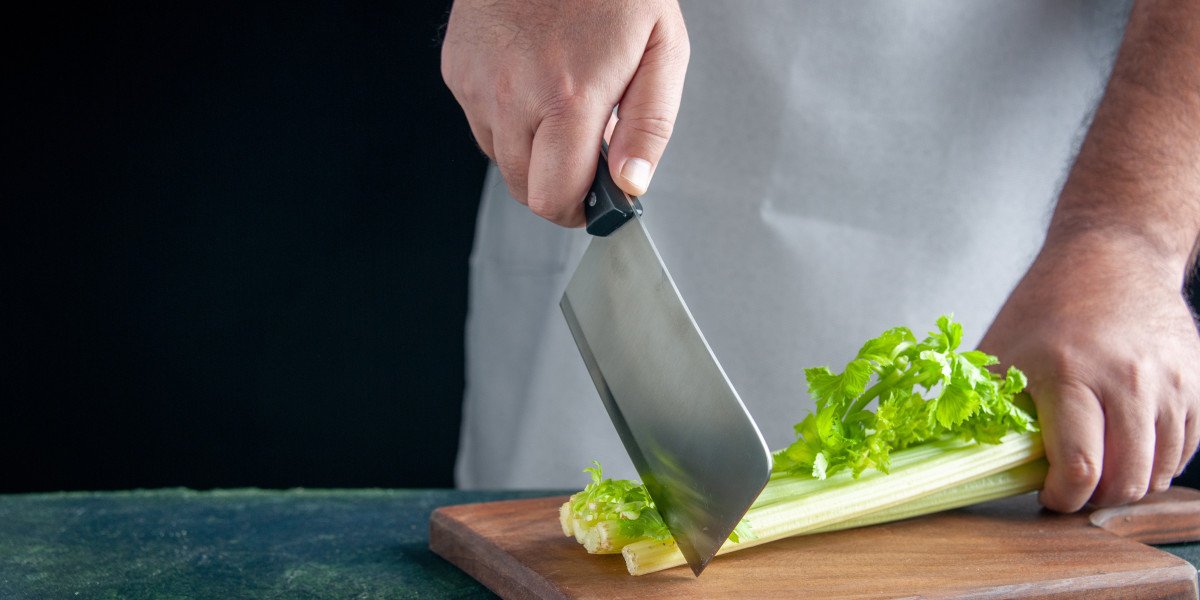When it comes to kitchen knives, few tools stand out like the Santoku knife. This Japanese chef knife has become a favorite among home cooks and professional chefs worldwide. Known for its precision, balance, and ability to handle multiple tasks, the Santoku is a kitchen essential that makes cooking easier and more enjoyable.
What is a Santoku Knife?
The Santoku knife is a traditional Japanese kitchen knife designed for three primary tasks: slicing, dicing, and mincing. The name “Santoku” translates to “three virtues” in Japanese, highlighting its versatility. Unlike heavier Western-style chef knives, the Santoku has a shorter, lighter blade with a flat edge and a distinctive sheepsfoot tip.
This design allows for cleaner cuts, especially when preparing vegetables, fish, or boneless meats. It’s not just about functionality; the Santoku knife also carries centuries of Japanese craftsmanship, blending practicality with artistry.
History and Origin
The Santoku knife first appeared in Japan during the mid-20th century as a response to the growing popularity of Western cooking styles. Traditionally, Japanese knives were specialized—some for cutting fish, others for vegetables, and others for meat. The Santoku brought something new: one knife capable of handling multiple kitchen tasks.
Its design was influenced by both the traditional Japanese Nakiri (vegetable knife) and the Western chef’s knife. The result was a hybrid blade that combined efficiency with versatility. Over time, the Santoku became a staple in Japanese households and eventually gained worldwide recognition.
Key Features of a Santoku Knife
Blade Length and Shape
Most Santoku knives have a blade length of 5 to 7 inches, shorter than a typical Western chef’s knife. This makes them easier to handle, especially for those with smaller hands. The blade is straight with minimal curve, designed for chopping rather than rocking motions.
Granton Edge
Many Santoku knives feature a Granton edge, which consists of small indentations along the blade. These prevent food from sticking, making slicing smoother and more efficient.
Sharpness
Japanese steel is known for its hardness and ability to hold a razor-sharp edge. A Santoku knife requires less sharpening than softer Western steel, which means longer-lasting precision cuts.
Balance and Comfort
The Santoku is lightweight and well-balanced, reducing hand fatigue during long cooking sessions. Its ergonomic handle provides comfort and control, allowing precise cutting even with delicate ingredients.
Why Choose a Santoku Knife?
Effortless Vegetable Prep
The flat blade is perfect for slicing vegetables thinly and evenly. Whether you’re chopping onions, shredding cabbage, or slicing cucumbers, the Santoku makes the task quick and clean.
Perfect for Fish and Meat
Its sharp edge glides easily through boneless cuts of meat and fish. The knife’s design minimizes tearing, preserving the texture and flavor of delicate ingredients.
Compact and User-Friendly
Because of its shorter length and lighter weight, the Santoku is easier to handle than larger chef knives. It’s an excellent choice for beginners who want a versatile knife without feeling intimidated by a long blade.
How to Use a Santoku Knife Properly
A Santoku knife is not used with a rocking motion like a Western chef’s knife. Instead, it’s designed for straight downward cuts. To use it properly, apply gentle pressure and let the sharpness of the blade do the work.
For best results:
Keep your fingertips tucked under when holding food.
Use a straight chopping or slicing motion.
Avoid twisting the blade, as this can damage the edge.
Caring for Your Santoku Knife
A well-maintained Santoku knife can last a lifetime. Here are some essential care tips:
Hand wash the knife with mild soap and dry it immediately.
Avoid dishwashers, as harsh detergents and heat can damage the blade.
Use a wooden or plastic cutting board to protect the edge.
Sharpen the blade with a whetstone when needed.
Store the knife in a block, sheath, or magnetic strip to prevent dulling.
Santoku Knife vs. Western Chef Knife
Both knives are excellent, but they serve slightly different purposes. The Western chef knife excels at heavy-duty tasks like breaking down large cuts of meat or performing rocking cuts. The Santoku, on the other hand, shines when precision and control are needed, particularly with vegetables, seafood, and boneless meats.
Many chefs choose to keep both knives in their kitchen, using each one depending on the task at hand.
Where to Buy a Quality Santoku Knife
Not all Santoku knives are created equal. High-quality models are forged from durable Japanese steel and crafted with attention to balance and comfort. If you’re looking for an authentic, premium option, you can explore a range of fitted Santoku knives designed for both home cooks and professionals.
Final Thoughts
The Santoku knife is more than just a kitchen tool; it’s a symbol of Japanese craftsmanship and culinary tradition. Its balance, sharpness, and versatility make it an essential knife for anyone serious about cooking. Whether you’re a home cook preparing quick meals or a chef aiming for precision, the Santoku knife delivers reliability and ease of use.
Adding one to your kitchen not only elevates your cooking experience but also connects you to a tradition of excellence that has stood the test of time.








